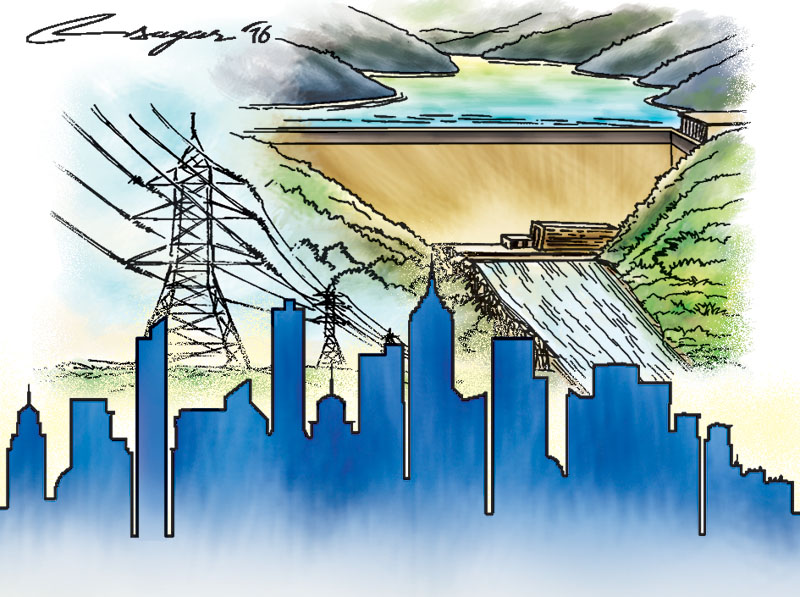Investment of BFis in hydel projects jumps
Kathmandu, June 7
Some two dozen projects with total rated capacity of around 500 megawatts have achieved financial closure since the Nepal Electricity Authority (NEA) implemented ‘take-or-pay’ provision in the power purchase pacts.
While the ‘take-or-pay’ provision came into effect some four months back, it was retrospective for all power purchase agreements (PPAs) signed since the endorsement of vision document from Cabinet on February 18, 2016. The Cabinet-endorsed long-term plan of the Ministry of Energy titled ‘National Energy Crisis Prevention and Electricity Development Decade, 2016’ has allowed NEA to implement ‘take-or-pay’ provision while signing PPA with power producers.
“Almost all the projects that had signed grid connection agreement with NEA since February 18, 2016 have achieved financial closure as banks readily started financing hydel projects along with the power utility bringing the ‘take-or-pay’ provision into effect,” said Shailendra Guragain, president of Independent Power Producers’ Association-Nepal (IPPAN).
Banks have been encouraged to finance hydro projects as ‘take-or-pay’ provision has ensured returns.
Bhuvan Kumar Dahal, CEO of Sanima Bank, said that the investment of BFIs in hydropower projects has gone up in the recent times after NEA implemented ‘take-or-pay’ provision in PPA.
Investment of BFIs in the hydropower sector had remained more or less stagnant in the last two years as NEA — the sole power off-taker of the country — had introduced power purchase agreement in dispatchable (take-and-pay) basis. The NEA board of directors’ meeting in August 2014 had decided to implement ‘take-and-pay’ in PPA for projects that were scheduled to be completed after 2017 citing there will be surplus energy with the country’s only power utility.
Under the ‘take-and-pay’ provision, the power off-taker is bound to pay only for the electricity used by NEA. However, in ‘take-or-pay’ provision, NEA has to pay the power developer for the quantum of electricity mentioned in the PPA whether it is able to sell the electricity or not.
According to Nepal Rastra Bank (NRB), the total investment of BFIs in hydropower stood at Rs 53.75 billion as of mid-April this year as compared to Rs 38.15 billion in the corresponding period of previous year. The investment amount between mid-April 2016 and mid-April 2017 has almost doubled when compared to the same period of the past year.
As per IPPAN, the independent power producers (IPPs) are in the process of construction various projects with total installed capacity of around 3,000 megawatts. Guragain of IPPAN commented that the power utility’s decision to enforce ‘take-and-pay’ provision in between August 2014 and February 2016 was a major setback for the private sector investment in hydropower development.
IPPAN has said that, however, there still exists differential treatment between foreign and domestic investors. While NEA has ensured to pay for the cent per cent electricity generated by foreign investment projects, it has provisioned to pay for 90 per cent of the electricity generated by the domestic investment projects. This means that domestic investors have to bear the risk of 10 per cent of the electricity they generate.
Guragain also alleged that tax incentive is also low for the domestic investment project as compared to foreign investment projects.
Earlier NEA officials had explained the special provisions for foreign investors were aimed at attracting more foreign investment in the hydro sector. They could not be reached for comment today.






